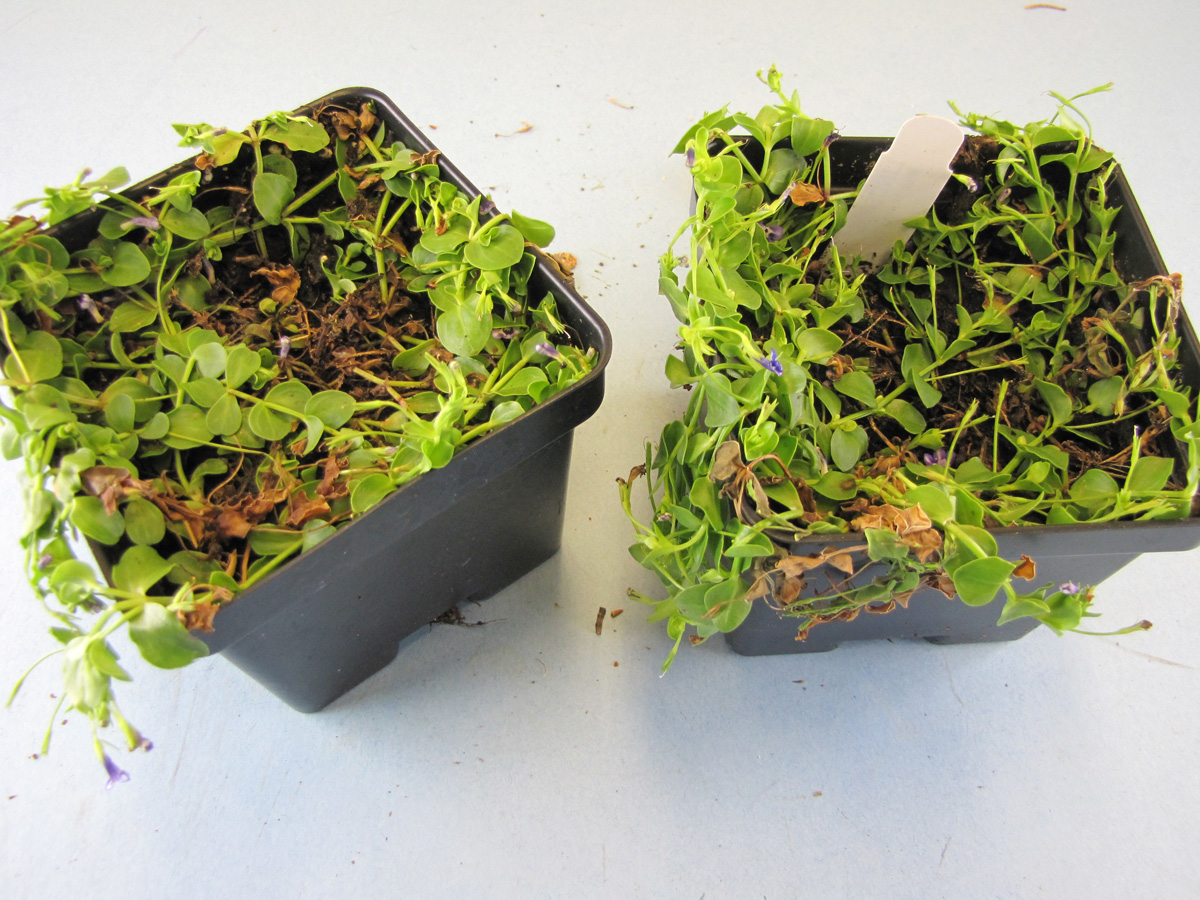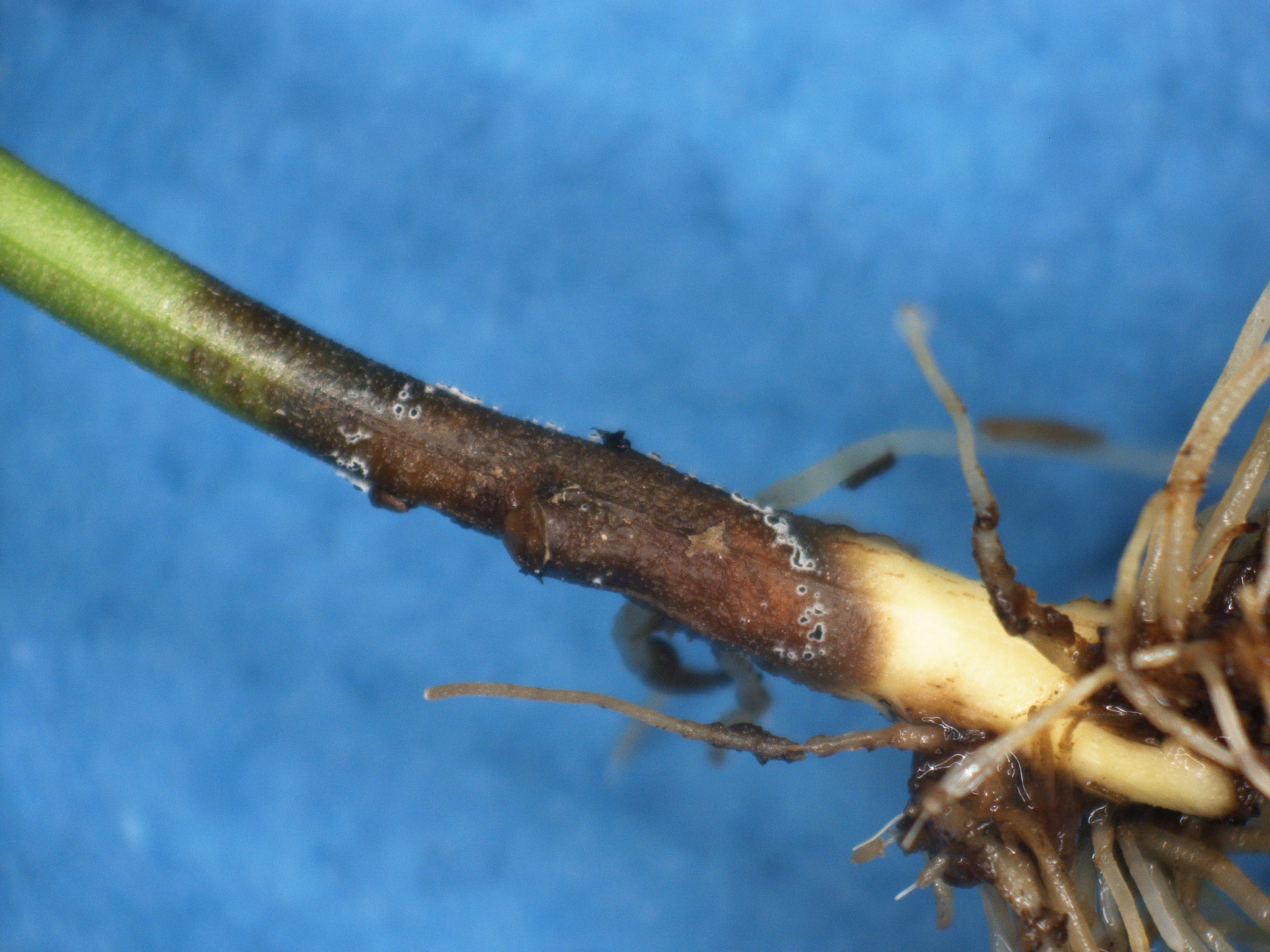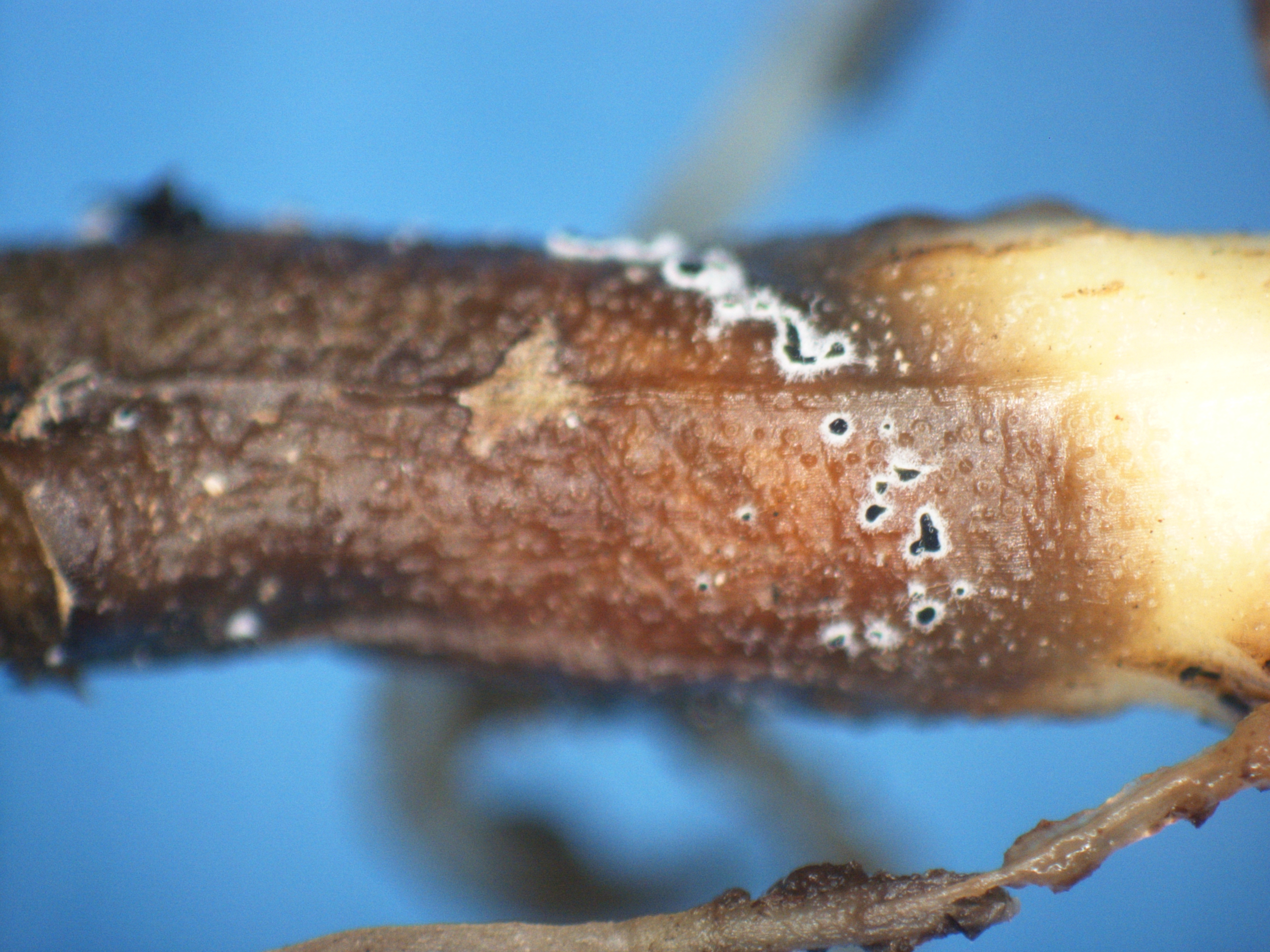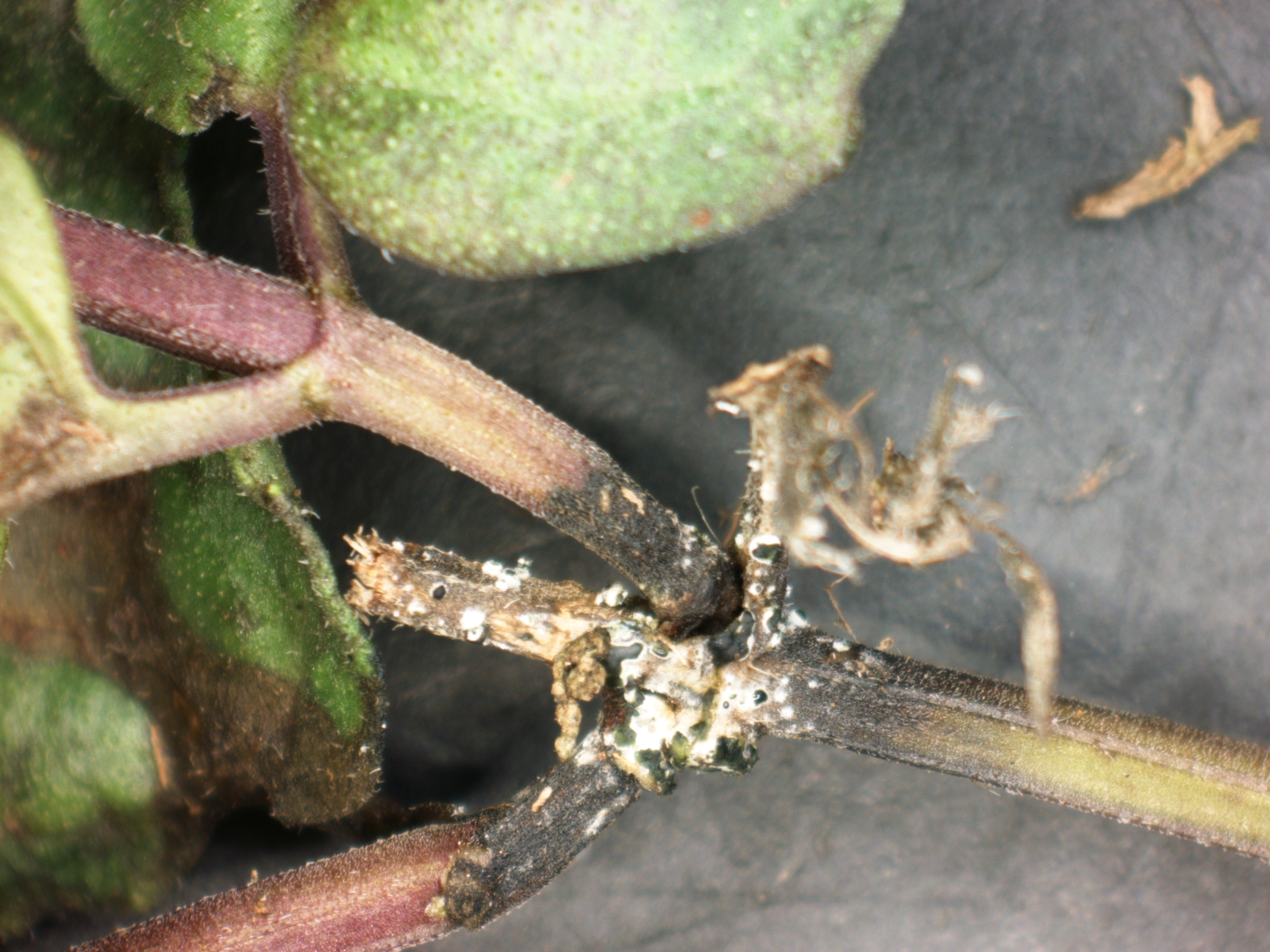Myrothecium diseases in the greenhouse
Picture of the Week | February 20, 2023
Tom Creswell, PPDL Lab Director
Myrothecium roridum is a fungal pathogen that may cause leaf spots, stem cankers and dieback on a wide range of plants when conditions are favorable in the greenhouse. This disease appears when greenhouse humidity is very high, such as during propagation or when young plants are grown in crowded conditions early in the spring. Injuries during handling and transplant and high fertilization rates can both increase susceptibility to infection.
Click images to enlarge
Symptoms may include crown rot, leaf damage (shown in Figures 1 and 2 on Lindernia anagallidea), stem dieback (shown in Figures 3 and 4) and/or stem canker (shown in Figures 5 and 6). We see this fungus most often on young perennials and herbs but it may also attack woody plants such as Euonymus and annuals such as begonia, petunia, verbena and impatiens under the right conditions.
Infected material should be removed from the greenhouse and benches, tools and pots sanitized to reduce spread. Reduced humidity and increased space between plants can also help reduce spread as can application of appropriate fungicides.
Keep up with current landscape issues by subscribing to the Purdue Landscape Report and learn to diagnose common landscape problems using Purdue Plant Doctor.









